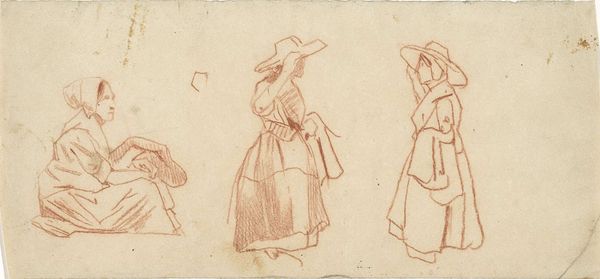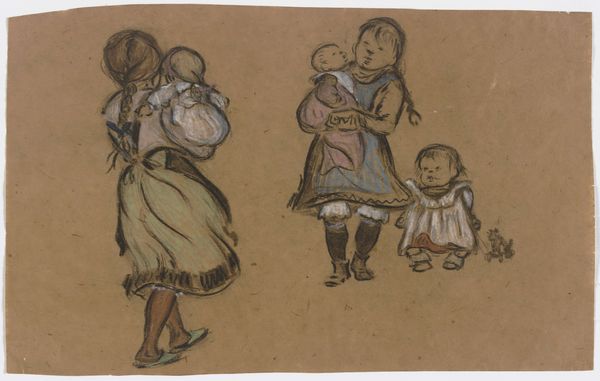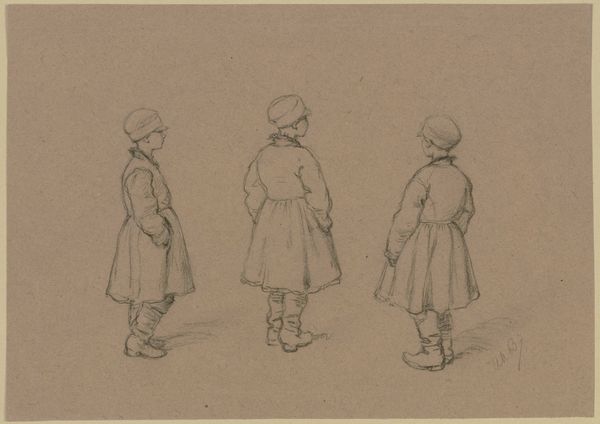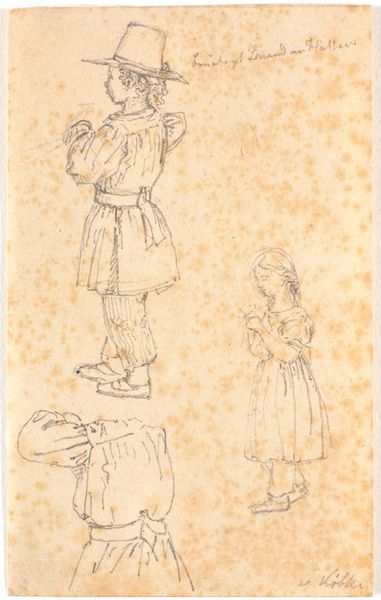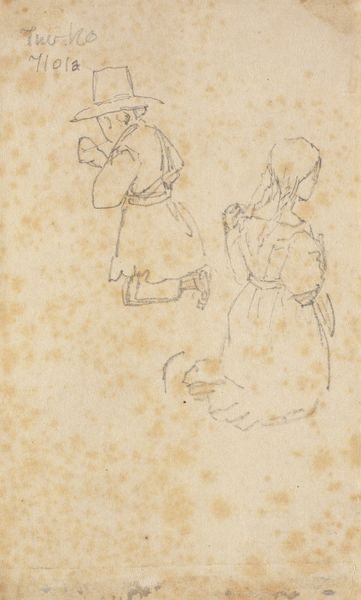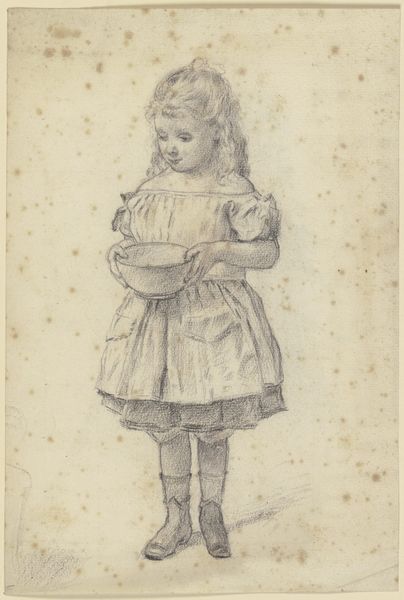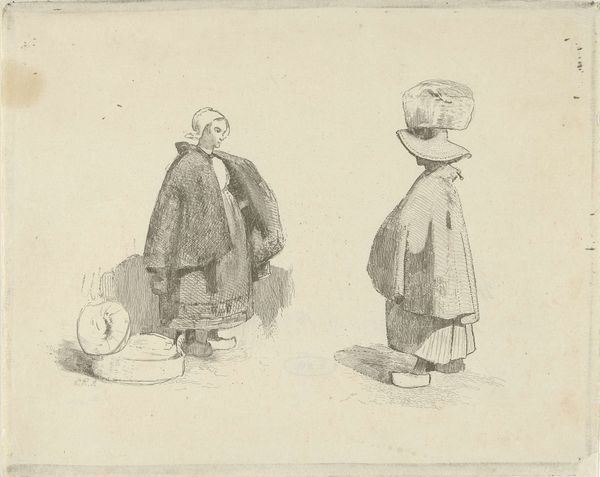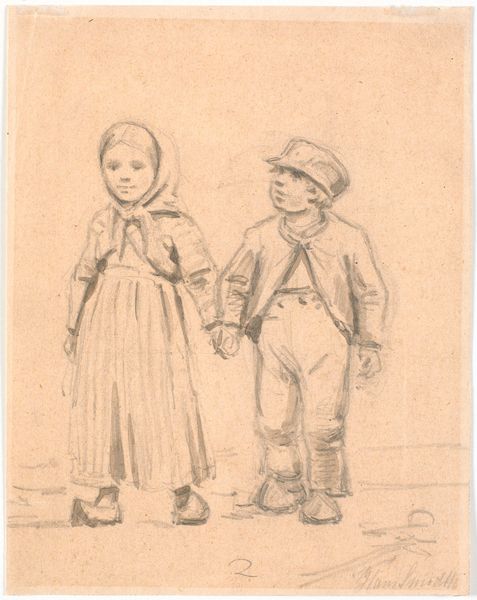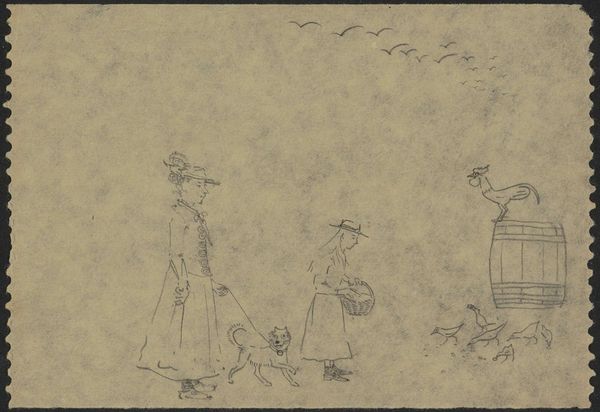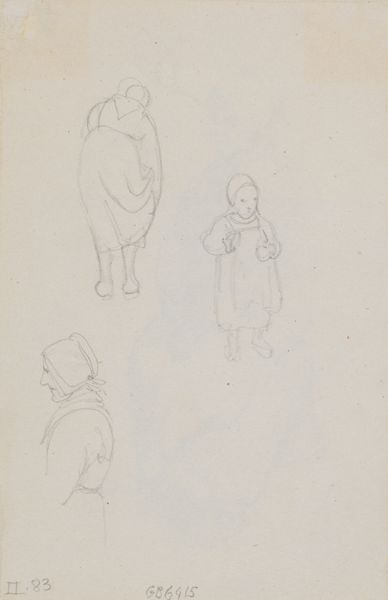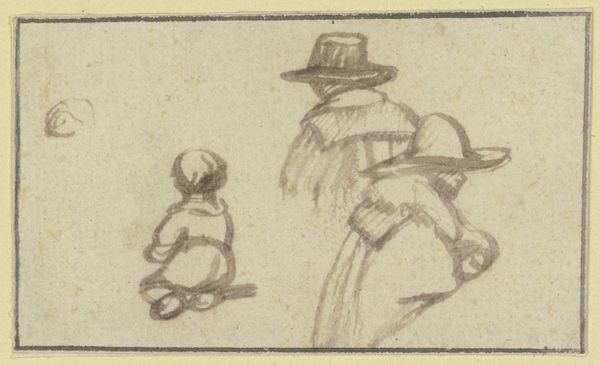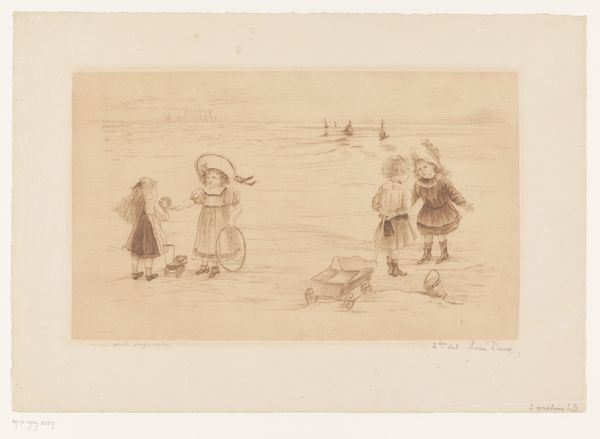
Copyright: Public Domain: Artvee
Editor: So, this is "Barnestudier," or "Children's Studies," a drawing using pencil and watercolor by Adolph Tidemand from 1852. It has a very quiet and unassuming presence; I notice two young children sketched in what seems like a simple, perhaps rural setting. I'm curious, looking at this piece, how do you read its cultural context? Curator: This work is fascinating when considering the rise of Romantic nationalism in 19th-century Europe. Genre paintings, particularly those depicting scenes of everyday life, gained prominence as they reinforced ideas about a distinct national character. Tidemand, a key figure in Norwegian Romantic nationalism, frequently portrayed peasant life. Given that, what social meanings might these "studies" of children convey? Editor: It's interesting that you bring up nationalism, as it isn't something I immediately associate with this simple sketch. Do you think these images contributed to the idealization of childhood within that nationalist framework? Are they symbols of innocence? Curator: Exactly! There’s an emerging concept here, a modern view of childhood linked to ideas about national identity and purity. The way the children are presented, in simple clothing, devoid of urban sophistication, aligns with a narrative of an idealized, untainted folk culture. It begs the question of how art shapes, and is shaped by, evolving cultural values. It definitely appears that art of the time idealized childhood, just as modern TV idealized 1950s domestic life. Editor: That’s an aspect I hadn’t considered. It shifts the focus from just an innocent sketch to something imbued with a larger sociopolitical agenda. I see now how these 'simple' images can hold profound historical weight. Thanks! Curator: Indeed. Examining the public role of art in different contexts provides insights into the political meanings behind even the seemingly most simple imagery.
Comments
No comments
Be the first to comment and join the conversation on the ultimate creative platform.
